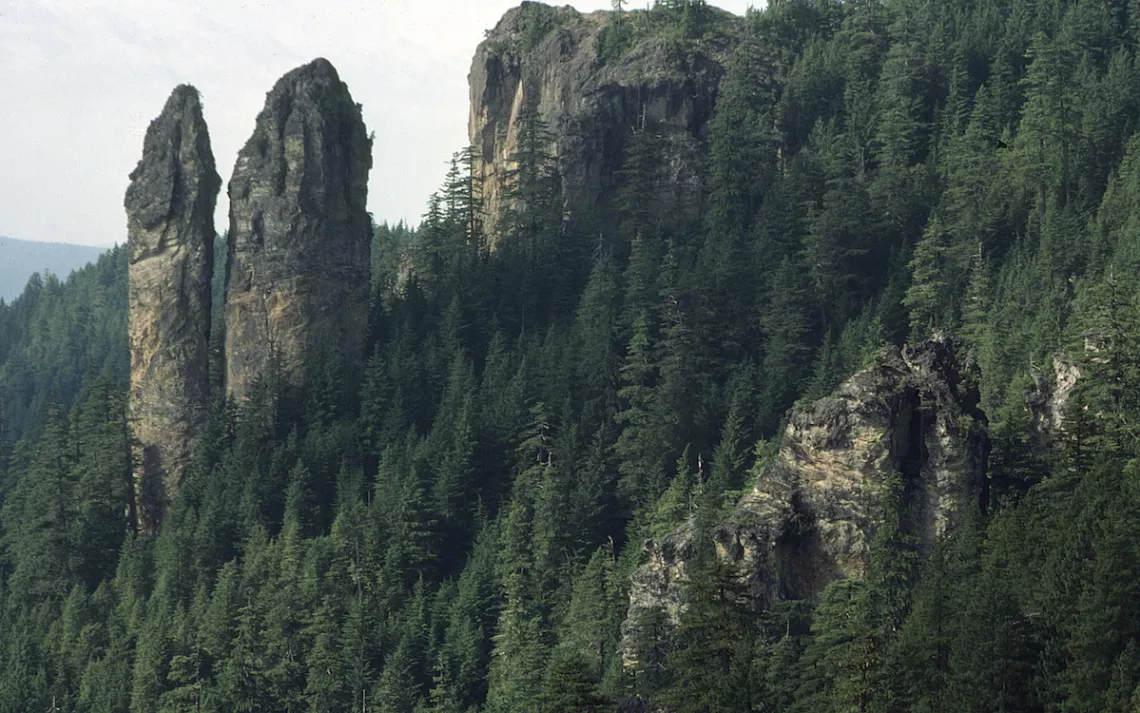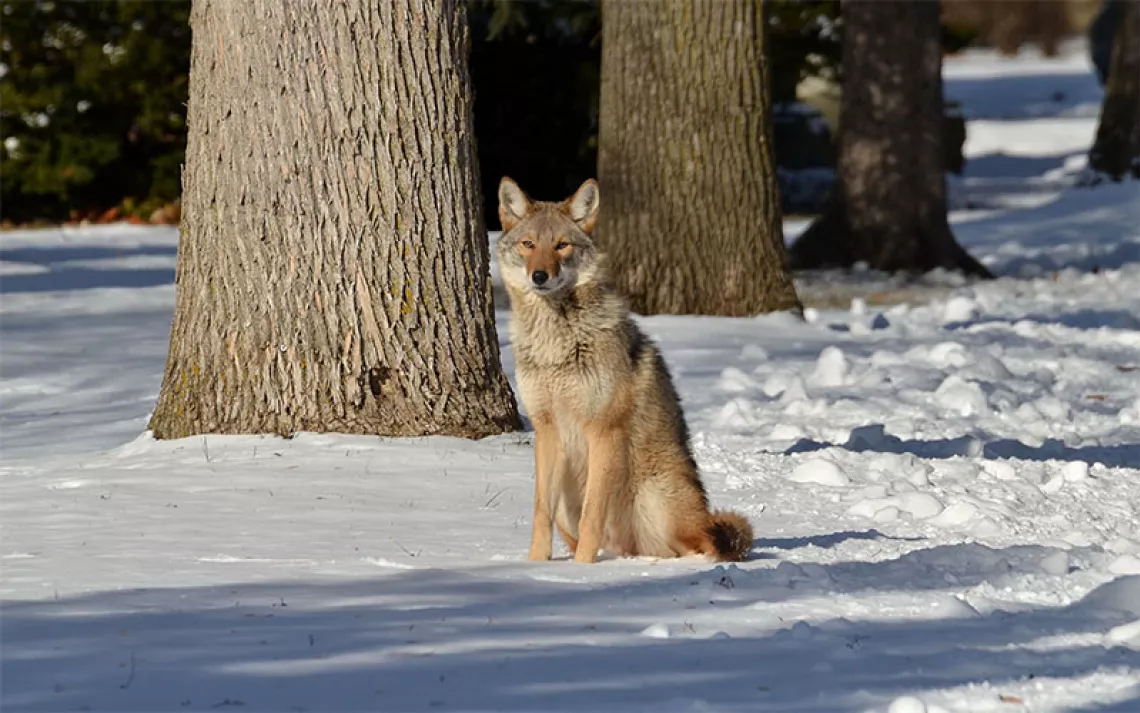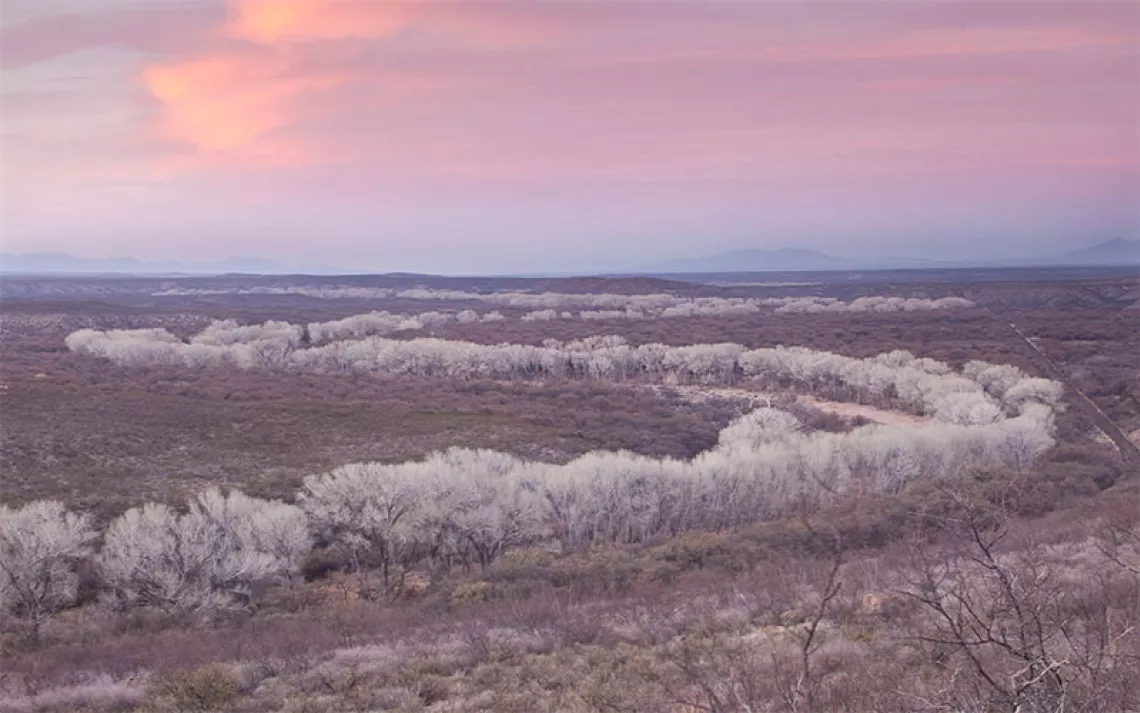Does the Douglas Fir Tree Deserve Its Own Monument?
The Friends of Douglas Fir National Monument think so

Just under 5,000 acres, the rugged Menagerie Wilderness Area would be one of three currently designated wilderness areas within the proposed national monument. | All photos by Jim Yuskavitch
A few years ago, Stephen Sharnoff, a botanical photographer and forest advocate from Berkeley, California, visited Redwood National Park in the northwest corner of the state. Marveling at the towering trees, he began thinking about other protected places where people can experience iconic trees within their naturally functioning ecosystems, like Sequoia and Joshua Tree National Parks. Why shouldn’t another great tree of the West—the Douglas fir—also have a place of its own, he wondered.
Sharnoff began giving presentations on the idea of a protected area for Douglas firs to conservation groups. David Stone, a Eugene, Oregon, conservation photographer and key figure in establishing the 37,000-acre Waldo Lake Wilderness Area in Oregon’s Cascade Mountains, was at one of them. He was looking for a new project when he heard Sharnoff’s idea. “After that,” says Stone, “I ended up being president of the Friends of Douglas Fir National Monument.” Sharnoff signed on as vice president. The Friends’ goal is to have 750 square miles of Oregon Cascade Mountains federally designated as the Douglas Fir National Monument, which would, over time, be restored to a healthy, functioning, protected Douglas fir forest that delivers a host of benefits, from outdoor recreation to clean water.
Unlike redwoods and sequoias, which grow within limited ranges, Douglas firs are found in many areas of the West. But in the forests of the Pacific states, they are the dominant tree species. Probably the most common tree in Oregon, the Douglas fir was designated the state tree in 1936. This is partly what makes them so important. “Douglas fir forests are unique in the world in that they only grow in the Pacific Northwest and are of such economic and ecological consequence,” says Jim Furnish, former deputy director for the U.S. Forest Service, past supervisor of the Siuslaw National Forest, located in the Oregon Coast Range, and current member of the Friends of Douglas Fir National Monument advisory council.
Making up a significant part of the world’s largest temperate rainforest, which stretches along the West Coast from Northern California well into British Columbia, extensive old-growth Douglas fir forests were once filled with massive trees, some more than 300 feet tall and six feet in diameter, rivaling redwoods and giant sequoias.
Those primeval forests eventually brought the timber industry to the region. In Oregon, commercial logging was well underway by the 1850s, and by the early 20th century was a major driver of the state’s economy. The peak decades of the 1950s thorough the late 1980s saw seven to more than 9 billion board feet of timber cut annually from the Oregon forestlands that make up 47 percent of the state. In 1970, nearly 17 billion board feet of timber was taken from Oregon and Washington forests.

The Douglas Fir National Monument would encompass 750 square miles of Douglas fir forest in Oregon’s Cascade Mountains, in various stages of growth and ecological health.
Most of the old-growth Douglas firs on the lower slopes of the Coast Range and western side of the Cascades had been logged off by 1900, and timber companies had to shift to other parts of the state or less accessible forestlands for the ancient trees.
As late as the 1980s, foresters still regarded old-growth Douglas fir forests as "decadent" and thought they needed to be logged before their valuable wood fiber rotted. Clear-cutting them in 120-acre swatches, then replanting seedlings to grow Douglas fir plantations slated for logging over short time intervals was the order of the day on both private and public lands.
But scientists were also beginning to unravel the secrets of Douglas fir ecosystems, finding them far from decadent. Their multilayered vegetation from canopy to understory—live trees, standing snags, underbrush, decaying logs, woody debris in streams—create habitat for animals like American martens, goshawks, red-backed tree voles, flying squirrels, Pacific salmon, and the most famous of all, a shy forest bird called the northern spotted owl.
In steep decline because its habitat was being cut down, the northern spotted owl was listed as threatened under the federal Endangered Species Act in 1990, sparking a fierce battle between timber interests and environmentalists, the latter wanting to protect the last of the ancient Douglas fir forests and the former wanting to continue cutting them down. In 1994, the federal Northwest Forest Plan was established, calling for protecting and restoring the remaining old-growth forests while also permitting continued logging on federally managed forestlands within the owl’s range in California, Oregon, and Washington. However, under the plan, logging on federal lands has been greatly reduced from historical levels—just 540 million board feet in 2011 from Oregon national forests—and it continues to be criticized by the timber industry and rural communities where logging on public forests once provided many more jobs.
And that is the other reason why a Douglas Fir National Monument is needed, say its proponents. “Even though there are lots of Douglas firs, we are down to 20 percent of old-growth forest ecosystems, and the Northwest Forest Plan is all we have to protect those forests,” says Dominick DellaSala, president and chief scientist for the Ashland, Oregon–based Geos Institute, who specializes in forest science. “While it’s stood up so far, there are regular runs to weaken the plan. If old-growth forests are not protected or in a remote area, they will eventually be logged.”
For their proposed national monument, the Friends chose 480,000 acres of forest real estate that makes up the Santiam River watershed on the west slope of the central Oregon Cascade Mountains. Located mostly within the Willamette National Forest and some Bureau of Land Management lands, it includes three designated wilderness areas, a wild and scenic river, two national byways, a mix of remnant old-growth forests, mountain meadows, roadless areas, clear-cuts, tree plantations, and a checkerboard of private land inholdings. In other words, it’s a pretty good cross-section of what Douglas fir country in the Pacific Northwest looks like today—the good, the bad, and the ugly.

The 28-mile-long Quartzville Creek, located within the proposed Douglas Fir National Monument, is a federally designated wild and scenic river and a popular summer recreation destination.
Keeping the good, eliminating the ugly, and fixing the bad is the goal of the monument and would be achieved through "restoration forestry." “The proposed monument has sufficient size to restore and preserve a meaningful remnant of a Douglas fir forest,” says Furnish, who as supervisor of the Siuslaw National Forest in the 1990s spearheaded a similar old-growth restoration program. Instead of creating new clear-cuts, they thinned trees, allowing the rest to eventually return to old-growth. “Our goal was to accelerate growth of fewer trees and bring back old-growth out of the clear-cuts,” he says. Furnish sees a prime opportunity to do the same in the proposed national monument.
Establishing the monument would also entail closing unmaintained roads and improving water quality in the watershed’s streams—the Santiam basin has ESA-listed runs of Chinook salmon and steelhead. However, Stone is quick to point out the monument would be far from “locked up.” “There will still be plenty of roads for recreational access, firefighting, and other purposes,” he explains. In addition, restoration forestry work would provide some timber and jobs for local communities.
So far, except for local county commissioners, there has not been much formal opposition to the proposal. The Forest Service is remaining neutral and the timber industry has not weighed in, probably because it is so early in the process. “I think that the national monument idea can gain some momentum, although certainly not with the current administration,” observes Lon Otterby, chair of the Many Rivers Sierra Club Group, which, along with the Mary’s Peak Group, supports the monument proposal.
With an administration extremely hostile to the idea of national monuments, it may seem like the timing for proposing a new one couldn’t be worse. But in a perverse sort of way, the election of Donald Trump may help by forcing the group to take the time to garner lots of public support rather than rushing prematurely for a designation. Stone notes that the Cascade-Siskiyou National Monument in Oregon and California—slated for possible shrinking by the Trump administration to benefit logging and cattle grazing interests—was two decades in the making.
Realizing that most of America’s national monuments involved many years of work before they were established, the Friends are taking the long view in their quest to turn a huge chunk of public forest into a healthy Douglas fir ecosystem, and Stone is spending a lot of time on the lecture circuit, promoting the idea of a Douglas Fir National Monument to everyone who will listen. “We have done so much manipulation of nature that we have a responsibility to send the forest back to what it wants to be,” says Stone. “And it’s probably not timber.”
 The Magazine of The Sierra Club
The Magazine of The Sierra Club







